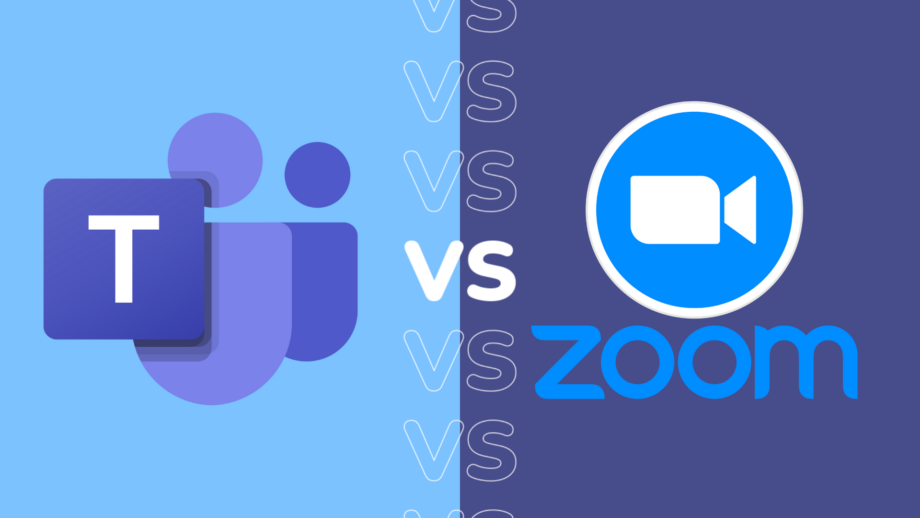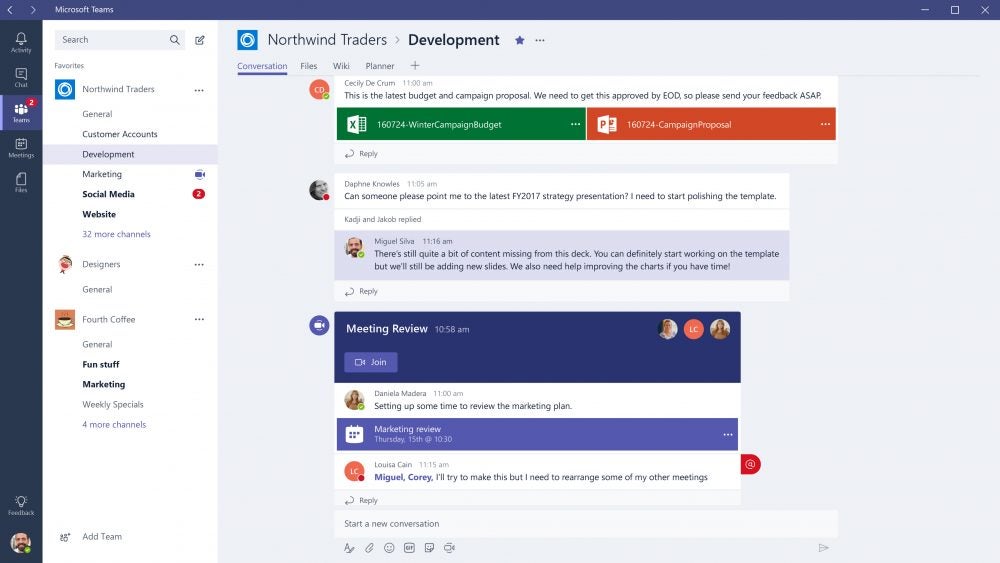Microsoft Teams vs Zoom: Which is the best video call service?

Ever since 2020, we have all become a lot more familiar with working from home, with services like Zoom and Microsoft Teams coming in handy for offices, universities and schools.
It’s safe to say that working from home is more popular now than ever before. With this new change, there are more platforms than ever that allow you to communicate with your coworkers, classmates and teachers, with the aim to make them as seamless as possible.
While working from home won’t ever be exactly the same as working in person, services like Zoom and Microsoft Teams have tried to emulate this experience as much as possible. But which platform comes out on top, and which is best for you and your team?
We’re going to be running through some of the key differences between the platforms, including how much they can cost, and the limitations that each platform has. Read on to find out everything you need to know about Zoom and Teams.
Teams is overall more affordable
Both Teams and Zoom come with multiple plans, including a base free plan. Teams offers three plans, not including the free one: Essentials, Microsoft 365 Business Basic and Microsoft 365 Business Standard.
The Essential plan gives users unlimited group meetings for up to 30 hours, up to 300 participants per meeting, up to 10GB of storage per user and anytime phone and web support. This costs £3 a month per user.
Microsoft 365 Business Basic has all the features of the Essential plan as well as access to the Microsoft Whiteboard, more collaboration tools, live captions in meetings, the option to transcribe your meetings and 1TB of storage per user, among other benefits. This option costs £4.50 a month.
Finally, Microsoft 365 Business Standard is the most expensive option at £9.40 a month. It comes with desktop versions of Office apps with premium features, webinar hosting, the ability to manage customer appointments and attendee registration and reporting tools, for more exclusivity.

Turning to Zoom, it comes with three paid plans and one free plan. The first plan (Pro) costs £11.99 a month or £119.90 a year. It offers up to 30 hours per meeting, 100 attendees per meeting, three editable whiteboards, 5GB of cloud storage, automated captions and access to the Beta Mail and Calendar client services.
The Business plan comes in second, at either £15.99 a month or £159.90 a year. It comes with the same features as Pro with unlimited meetings at 30 hours a piece, up to 300 attendees, access to Team Chat – which comes with chats and channels for more seamless communication – as well as extras like managed domains and company branding.
The Business Plus plan is the most premium at £185 a year. It upgrades on the Business plan by adding 10GB of recording storage, automated and translated captions and Zoom Phone capabilities, which include unlimited regional calling and automatic call distribution groups with call queuing.
Zoom also offers a Large Meeting add-on for £50 a month, which gives users a meeting capability of 1000 participants.
Looking between the two, many of the plans offer very similar features, but Teams edges out Zoom in terms of pricing. However, since there are free versions of both platforms, which we will touch on later, you can always work around this issue by using the most basic plan.
Zoom lets users record videos on its free plan
If you’re looking to record your video calls while using a free plan, Zoom is the best option. Unlike Microsoft Teams, people that are using the Zoom free plan can record the audio and video from their calls.
This is better suited to those who need to conduct interviews – both for work and school – or create talks that can be saved and sent to other people. Teams does have the option to record the audio and video from calls, but users will need to be on a paid plan, making it the less enticing option for anyone who won’t need to use this feature as often.
Teams offers longer meeting times in its free plan
When it comes to the base free plans of both platforms, Teams has the edge when it comes to time. In Teams, you can set up an unlimited number of one-to-one meetings for up to 30 hours long, with group meetings having a cap of 60 minutes.
Calls can have 100 participants, with 5GB of storage per user. Live captions (in English) can be turned on during meetings, there is access to unlimited chats with coworkers and customers, as well as fire sharing, tasks and polling features.

Zoom, on the other hand, offers up unlimited meetings for up to 40 minutes with the ability to add 100 participants. Users have access to three editable whiteboards, which have 25GB of cloud storage, as well as Team Chat and the Beta version of Mail and Calendar.
The main difference between these free plans is the 40-minute and 60-minute caps on group meetings. Since you can always restart a call immediately after, this is not a huge dealbreaker for Zoom, however, Teams may be the slightly better option for anyone who usually engages in particularly long meetings.
Zoom is better for external meetings
If you’re planning to engage in an interview call for a job or for school, Zoom makes it easier for anyone to join in on a call, making it the more accessible option. People joining the call will not need to download the Zoom app or even have a Zoom account, making it much more convenient to meet up with people outside of your organisation.
It’s important to note that anyone wanting to start a Zoom call will need an account, although it does not have to be a paid account. The same is true for Microsoft Teams.

Unlike Zoom, Teams makes it a little harder for outside participants to join in on a call. If you want to join a call on your phone or tablet, you will need to be using Chrome or Microsoft Edge and join via the web. While you do not need an account to join an outside call, it is more restrictive than Zoom and not as streamlined.
Moreover, the free Zoom plan has the option of streaming meetings on social media, which is ideal for anyone hoping to expand their business. Webinar hosting is available on Teams but you will need to be using the Business Standard membership, proving that the platform is more focused on internal meetings than Zoom.
Teams is better suited for messaging
Teams can be categorised as an all-in-one collaboration tool, which means the platform has a lot more emphasis on communication and collaboration features than its rival.
The chat feature on Zoom is a little lacklustre when compared to Teams, with no options to attach GIFs or stickers. While this does not seem like a feature worth talking about, the ability to colour-code projects with stickers could be helpful in a work environment.

And while both platforms come with whiteboard options, Teams has expanded this area a little more, too. Users have the choice between a variety of templates, including Brainstorming, Problem Solving, Workshops, Learning, Games and many more. This can make any remote meetings feel more involved and make it easier to communicate with your co-workers and clients.
Zoom does offer whiteboard options, with many praising how easy it is to navigate, but it is more surface-level than the variety that Teams offers.








